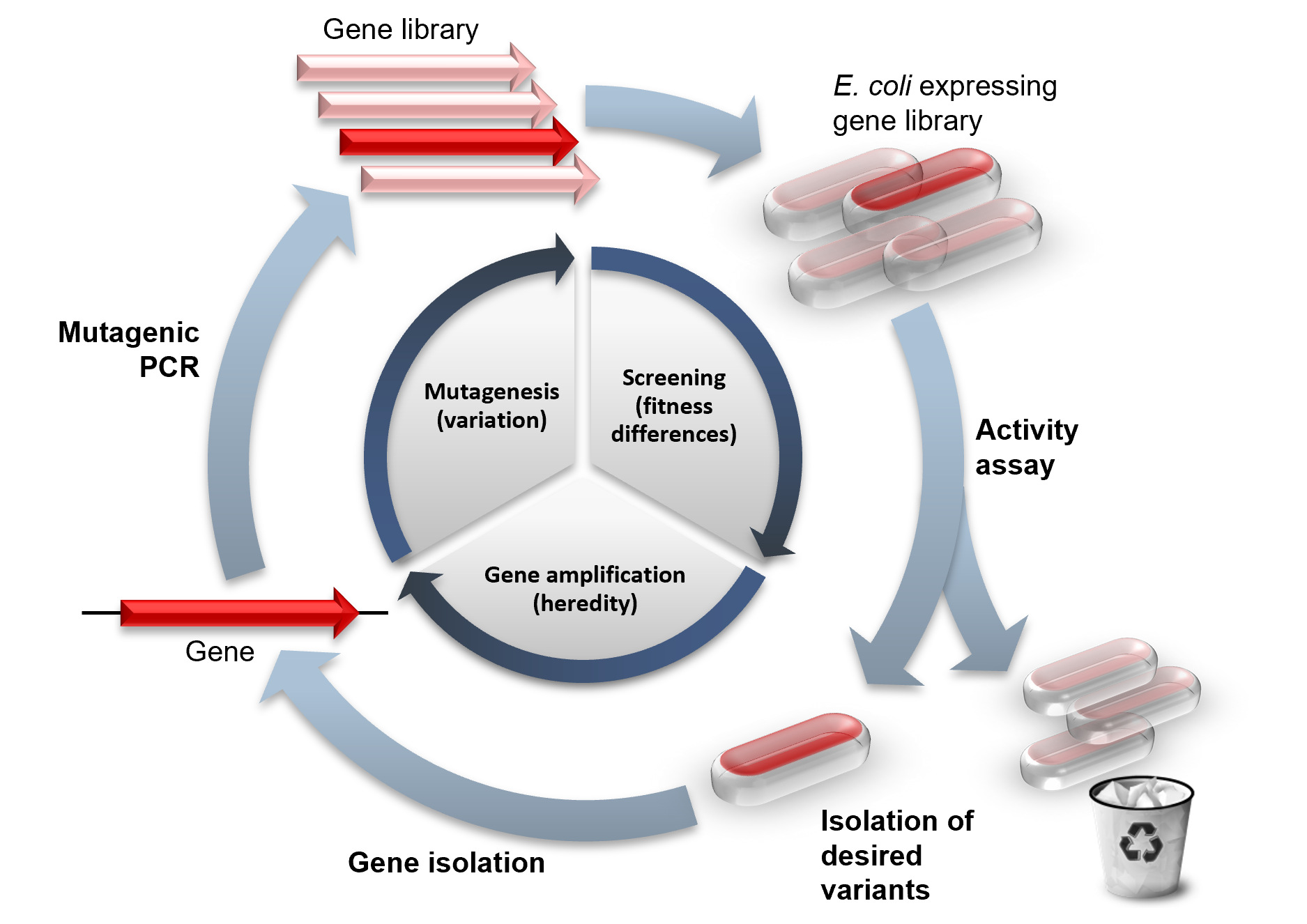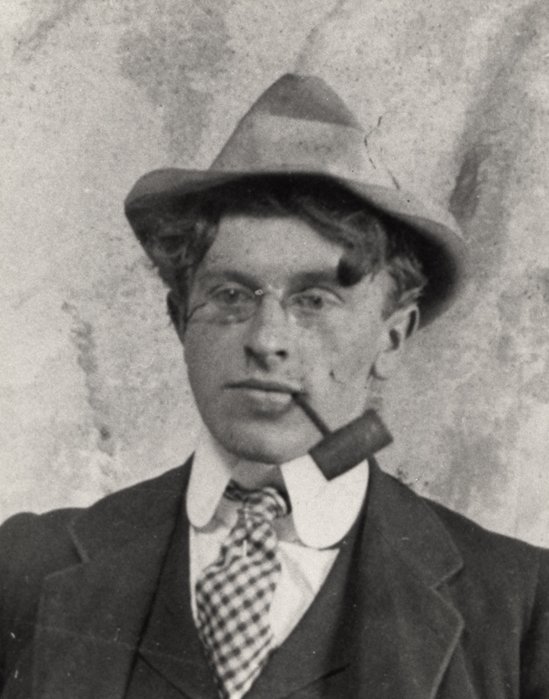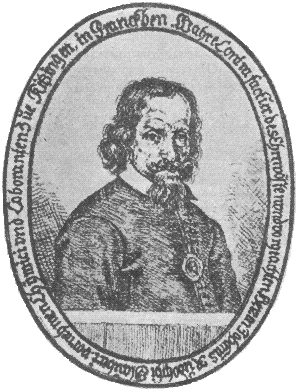|
Frances Arnold
Frances Hamilton Arnold (born July 25, 1956) is an American chemical engineer and Nobel Laureate. She is the Linus Pauling Professor of Chemical Engineering, Bioengineering and Biochemistry at the California Institute of Technology (Caltech). In 2018, she was awarded the Nobel Prize in Chemistry for pioneering the use of directed evolution to engineer enzymes. Since January 2021, she serves as an external co-chair of President Joe Biden's Council of Advisors on Science and Technology (PCAST). Early life and education Arnold is the daughter of Josephine Inman (née Routheau) and nuclear physicist William Howard Arnold, and the granddaughter of Lieutenant General William Howard Arnold. She grew up in the Pittsburgh suburb of Edgewood, and the Pittsburgh neighborhoods of Shadyside and Squirrel Hill, graduating from the city's Taylor Allderdice High School in 1974. As a high schooler, she hitchhiked to Washington, D.C., to protest the Vietnam War and lived on her own, working as a ... [...More Info...] [...Related Items...] OR: [Wikipedia] [Google] [Baidu] |
President's Council Of Advisors On Science And Technology
The President's Council of Advisors on Science and Technology (PCAST) is a council, chartered (or re-chartered) in each administration with a broad mandate to advise the president of the United States on science and technology. The current PCAST was established by on September 30, 2001, by George W. Bush, was re-chartered by Barack Obama's April 21, 2010, , by Donald Trump's October 22, 2019, , and by Joe Biden's February 1, 2021, . History The council follows a tradition of presidential advisory panels focused on science and technology that dates back to President Franklin D. Roosevelt's Science Advisory Board, continued by President Harry Truman. Renamed the President's Science Advisory Committee (PSAC) by Dwight Eisenhower, it was disbanded by President Richard Nixon. Reagan science advisor Jay Keyworth re-established a smaller "White House Science Council" It reported, however, to him, not directly to the president. Renamed PCAST, and reporting directly to the president, a ... [...More Info...] [...Related Items...] OR: [Wikipedia] [Google] [Baidu] |
Raymond And Beverly Sackler Prize In Convergence Research
The Raymond and Beverly Sackler Prize in Convergence Research, first awarded in 2015, is a prize conferred by the United States National Academy of Sciences. The award recognizes significant advances in convergence research, defined as work integrating scientific disciplines, and is presented for achievements that are possible only through such integration. The winner is presented with a medal and a $350,000 cash prize. The inaugural prize was awarded to Chad A. Mirkin in 2015 "for impressively integrating chemistry, materials science, molecular biology, and biomedicine in the development of spherical nucleic acids and new types of nanostructures that are widely used in the rapid and automated diagnosis of infectious diseases and many other human diseases—including cancers and cardiac disease—and in the detection of drug-resistant bacteria." The winner in 2016 was Stephen R. Quake "for his innovative technological advances in microfluidics and genomics that made possible new ... [...More Info...] [...Related Items...] OR: [Wikipedia] [Google] [Baidu] |
William Howard Arnold
William Howard Arnold (January 18, 1901 – September 30, 1976) was a lieutenant general in the United States Army. Early life Arnold was born in Dyersburg, Tennessee on January 18, 1901. In 1924 he graduated from the United States Military Academy. Early career Assigned to the Infantry, Arnold served in assignments throughout the United States. In 1928 he graduated from the Infantry Officer Course. From 1928 to 1930 he was assigned to Schofield Barracks, Hawaii. Arnold was assigned as Training and Operations Officer, S-3, for the 15th Infantry Regiment in Tientsin, China from 1934 to 1936. In 1938 he graduated from the Command and General Staff College. World War II From 1942 to 1943 Arnold was Assistant Chief of Staff for Training and Operations, G-3, of the IV Corps, headquartered at Fort Lewis, Washington. Arnold was promoted to brigadier general in September, 1943 and assigned as Chief of Staff of the XIV Corps, supervising the planning and execution of combat ... [...More Info...] [...Related Items...] OR: [Wikipedia] [Google] [Baidu] |
William Howard Arnold (physicist)
William Howard Arnold is an American nuclear physicist, with primary areas of expertise in nuclear power, nuclear fuel, and nuclear waste disposal.Improving the Scientific Basis for Managing DOE's Excess Nuclear Materials and Spent Nuclear Fuel, Board on Radioactive Waste Management (BRWM), Appendix B Biographical Sketches of Committee Members, WM. HOWARD ARNOLD, (2003)/ref>US Nuclear Waste Technical Review Board Resume of William Howard Arnold/ref> He was president and manager of the first privately owned uranium-enrichment facility in the United States, Louisiana Energy Services.Memories Of A Westinghouse "Nuke": My Life And Times In The Nuclear Business, Howard Arnold/ref> He was responsible for nuclear reactor, reactor physics design of the first series of Westinghouse Corporation commercial nuclear reactors, and served as president of the Nuclear International Division of Westinghouse Corporation. He designed nuclear reactor cores for civilian power reactors, for space power ... [...More Info...] [...Related Items...] OR: [Wikipedia] [Google] [Baidu] |
Enzyme
Enzymes () are proteins that act as biological catalysts by accelerating chemical reactions. The molecules upon which enzymes may act are called substrates, and the enzyme converts the substrates into different molecules known as products. Almost all metabolic processes in the cell need enzyme catalysis in order to occur at rates fast enough to sustain life. Metabolic pathways depend upon enzymes to catalyze individual steps. The study of enzymes is called ''enzymology'' and the field of pseudoenzyme analysis recognizes that during evolution, some enzymes have lost the ability to carry out biological catalysis, which is often reflected in their amino acid sequences and unusual 'pseudocatalytic' properties. Enzymes are known to catalyze more than 5,000 biochemical reaction types. Other biocatalysts are catalytic RNA molecules, called ribozymes. Enzymes' specificity comes from their unique three-dimensional structures. Like all catalysts, enzymes increase the reaction ra ... [...More Info...] [...Related Items...] OR: [Wikipedia] [Google] [Baidu] |
Directed Evolution
Directed evolution (DE) is a method used in protein engineering that mimics the process of natural selection to steer proteins or nucleic acids toward a user-defined goal. It consists of subjecting a gene to iterative rounds of mutagenesis (creating a library of variants), selection (expressing those variants and isolating members with the desired function) and amplification (generating a template for the next round). It can be performed ''in vivo'' (in living organisms), or ''in vitro'' (in cells or free in solution). Directed evolution is used both for protein engineering as an alternative to rationally designing modified proteins, as well as for experimental evolution studies of fundamental evolutionary principles in a controlled, laboratory environment. History Directed evolution has its origins in the 1960s with the evolution of RNA molecules in the " Spiegelman's Monster" experiment. The concept was extended to protein evolution via evolution of bacteria under select ... [...More Info...] [...Related Items...] OR: [Wikipedia] [Google] [Baidu] |
Linus Pauling
Linus Carl Pauling (; February 28, 1901August 19, 1994) was an American chemist, biochemist, chemical engineer, peace activist, author, and educator. He published more than 1,200 papers and books, of which about 850 dealt with scientific topics. ''New Scientist'' called him one of the 20 greatest scientists of all time, and as of 2000, he was rated the 16th most important scientist in history. For his scientific work, Pauling was awarded the Nobel Prize in Chemistry in 1954. For his peace activism, he was awarded the Nobel Peace Prize in 1962. He is one of five people to have won more than one Nobel Prize (the others being Marie Curie, John Bardeen, Frederick Sanger and Karl Barry Sharpless). Of these, he is the only person to have been awarded two unshared Nobel Prizes, and one of two people to be awarded Nobel Prizes in different fields, the other being Marie Curie. Pauling was one of the founders of the fields of quantum chemistry and molecular biology. His contributions t ... [...More Info...] [...Related Items...] OR: [Wikipedia] [Google] [Baidu] |
Nobel Laureate
The Nobel Prizes ( sv, Nobelpriset, no, Nobelprisen) are awarded annually by the Royal Swedish Academy of Sciences, the Swedish Academy, the Karolinska Institutet, and the Norwegian Nobel Committee to individuals and organizations who make outstanding contributions in the fields of chemistry, physics, literature, peace, and physiology or medicine. They were established by the 1895 will of Alfred Nobel, which dictates that the awards should be administered by the Nobel Foundation. The Nobel Memorial Prize in Economic Sciences was established in 1968 by the Sveriges Riksbank, the central bank of Sweden, for contributions to the field of economics. Each recipient, a Nobelist or ''laureate'', receives a gold medal, a diploma, and a sum of money which is decided annually by the Nobel Foundation. Prize Each prize is awarded by a separate committee; the Royal Swedish Academy of Sciences awards the Prizes in Physics, Chemistry, and Economics; the Karolinska Institute awards the Prize ... [...More Info...] [...Related Items...] OR: [Wikipedia] [Google] [Baidu] |
Chemical Engineer
In the field of engineering, a chemical engineer is a professional, equipped with the knowledge of chemical engineering, who works principally in the chemical industry to convert basic raw materials into a variety of products and deals with the design and operation of plants and equipment. In general, a chemical engineer is one who applies and uses principles of chemical engineering in any of its various practical applications; these often include # design, manufacture, and operation of plants and machinery in industrial chemical and related processes ("chemical process engineers"); # development of new or adapted substances for products ranging from foods and beverages to cosmetics to cleaners to pharmaceutical ingredients, among many other products ("chemical product engineers"); and # development of new technologies such as fuel cells, hydrogen power and nanotechnology, as well as working in fields wholly or partially derived from chemical engineering such as materials sc ... [...More Info...] [...Related Items...] OR: [Wikipedia] [Google] [Baidu] |
Christopher Voigt
Christopher Voigt is an American synthetic biologist, molecular biophysicist, and engineer. Career Voigt is the Daniel I.C. Wang Professor of Advanced Biotechnology in the Department of Biological Engineering at Massachusetts Institute of Technology (MIT). He works in the developing field of synthetic biology. He is the Co-Director of the Synthetic Biology Center at MIT and the Co-Founder of the MIT-Broad Foundry. His research interests focus on the programming of cells to perform coordinated and complex tasks for applications in medicine, agriculture, and industry. His works include: * Design of genetic circuits in bacteria, yeast and mammalian cells. Encoded in DNA, these circuits implement computational operations inside of cells. * Software to program living cells (Cello), which is based on principles from electronic design automation and is based on Verilog. * Genetically-encoded sensors that enables cells to respond to chemicals, environmental cues, and colored light. * C ... [...More Info...] [...Related Items...] OR: [Wikipedia] [Google] [Baidu] |
California Institute Of Technology
The California Institute of Technology (branded as Caltech or CIT)The university itself only spells its short form as "Caltech"; the institution considers other spellings such a"Cal Tech" and "CalTech" incorrect. The institute is also occasionally referred to as "CIT", most notably in its alma mater, but this is uncommon. is a private research university in Pasadena, California. Caltech is ranked among the best and most selective academic institutions in the world, and with an enrollment of approximately 2400 students (acceptance rate of only 5.7%), it is one of the world's most selective universities. The university is known for its strength in science and engineering, and is among a small group of institutes of technology in the United States which is primarily devoted to the instruction of pure and applied sciences. The institution was founded as a preparatory and vocational school by Amos G. Throop in 1891 and began attracting influential scientists such as George Ellery H ... [...More Info...] [...Related Items...] OR: [Wikipedia] [Google] [Baidu] |
Biochemistry
Biochemistry or biological chemistry is the study of chemical processes within and relating to living organisms. A sub-discipline of both chemistry and biology, biochemistry may be divided into three fields: structural biology, enzymology and metabolism. Over the last decades of the 20th century, biochemistry has become successful at explaining living processes through these three disciplines. Almost all areas of the life sciences are being uncovered and developed through biochemical methodology and research. Voet (2005), p. 3. Biochemistry focuses on understanding the chemical basis which allows biological molecules to give rise to the processes that occur within living cells and between cells,Karp (2009), p. 2. in turn relating greatly to the understanding of tissues and organs, as well as organism structure and function.Miller (2012). p. 62. Biochemistry is closely related to molecular biology, which is the study of the molecular mechanisms of biological phenomena.As ... [...More Info...] [...Related Items...] OR: [Wikipedia] [Google] [Baidu] |




.jpg)
